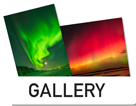|
30 /120
|
| Weak |
| 49.2nT |
| Light Activity |
|
|
| Weak |
Key Insights
The Northern lights forecast for 21:00-00:00 has been hit-and-miss, with potentially strong activity. Due to inconsistent forecast conditions, it is important to check the actuals here as they become available. Arrival of the Aurora locally is estimated at 23:59, with some visibility likely before if the Aurora is 'active' or 'very active'.
Current Northern Lights Conditions in Iceland
|
Kp
1
|
The current Aurora is a Kp1 (on a scale of 0-9) and will cover northern Iceland from 23:59. Viewed from Reykjavík, when active, the Aurora is positioned closely to the NNW horizon and may not be seen from further south than Hella. Aurora Conditions in 41 minutes: The Aurora will expand to a Kp1-2. |
|
Light Activity
|
Faint aurora activity can be observed with visible auroras in dark places. Pay attention to Kp position. Use a camera to find the aurora if not visible straight away. |
Northern Lights Solar Wind Data
 Speed |
 Density |
 IMF Bt |
 IMF Bz |
| 606.8km/s | 0.87p/cm3 | 6.43nT | 3.49nT |
Solar Wind & Bz Analysis
|
30 /120
|
| Weak |
Solar wind conditions have been very weak with positive polarity. Visible aurora displays unlikely.
The Bz index is currently positive (northward). Aurora activity is unlikely to build significantly unless conditions turn negative.
Magnetometer Data
|
49.2 nT
|
Light Activity
|
|
|
67.3 nT
|
Activating
|
Aurora Chasers Info
This magnetometer section contains data from both the magnetometer in Tromsø and the magnetometer in Reykjavík (Leirvogi). These locations are at latitudes from 69 to 64 degrees north – the Arctic Circle is at 66 degrees north – and allow us to measure aurora activity over a wide area. With these two measurements, it is possible to identify the intensity and also the approximate location of the lights.
Tromsø (69° N): When the Tromsø magnetometer shows increased activity, increased aurora activity can be expected towards the northern (NNE to NNW) horizon. However, weather and atmospheric conditions can affect visibility.
Reykjavík (64° N): Increased readings here indicate northern lights near Iceland, often visible towards the Big Dipper (Ursa Major) (Kp2 to Kp3-4) or directly overhead or towards the southern horizon (Kp4 or higher), when viewed from Reykjavík. The further North you are in Iceland, the better the chances of seeing strong northern lights even with low Kp factors. Staying in the South, you need at least Kp2.
Magnetometer Reading Guide:
Inactivity: Auroras typically become visible when magnetometer readings approach or exceed ±50nT.
Charging Phase: When magnetometers rise above 50nT, it suggests that geomagnetic activity is increasing, and the field is "charging".
Substorm Activity (Active or Very Active): These are usually indicated by sharp drops in magnetometer readings, measuring a decline of 100nT from the starting position or falling below -100nT. Very active substorms will drop well below -250nT and lower.
Weakening Phase: After a substorm, if readings rise from below a negative value, it indicates that the energy is dissipating.
Key Points:
Positive readings above 50nT that are rising generally indicate building geomagnetic activity.
Visibility of the aurora by eye starts from ±50nT, depending on atmospheric conditions, light pollution and other factors.
Readings around or above 100nT suggest auroras might be visible whilst continuing to build energy.
Significant drops below -100nT or sudden changes in readings often signal substorm activity, meaning strong aurora displays.
By monitoring these readings, you can better predict and observe the mesmerizing auroras, whether you're a novice or a seasoned chaser. Always consider local weather conditions and light pollution for the best viewing experience.
Aurora Conditions in 41 minutes
|
Kp
1-2
|
The Aurora will expand to a Kp1-2. The Kp1-2 will cover all of Iceland from 23:59. Viewed from Reykjavík, when active, the Aurora will be positioned above the NNW horizon. When viewing the Aurora from the South Coast, seek higher ground and avoid mountains in a NNE-NNW direction where possible. |
Northern Lights Solar Wind Data
 Speed |
 Density |
 IMF Bt |
 IMF Bz |
| 623.1km/s | 0.61p/cm3 | 5.82nT | 1.8nT |
Solar Wind & Bz Analysis
|
30 /120
|
| Weak |
The Solar Wind quality remains steady over the next 41 minutes.
The Bz index is forecasted to remain positive (northward), making significant aurora activity unlikely unless conditions become negative.
3-Day Aurora Forecast by NOAA
| TODAY | |||||
| Time UTC | Actual Kp | Cond. met? | Jul 15 | Jul 16 | Jul 17 |
|---|---|---|---|---|---|
| 00:00-03:00 |
Kp
4
|
Yes |
Kp
4
|
Kp
4
|
Kp
3
|
| 03:00-06:00 |
Kp
4-5
|
Yes |
Kp
4-5
|
Kp
3-4
|
Kp
2-3
|
| 06:00-09:00 |
Kp
5-6
|
Over |
Kp
5
|
Kp
3
|
Kp
2
|
| 09:00-12:00 |
Kp
5-6
|
Over |
Kp
4-5
|
Kp
2-3
|
Kp
1-2
|
| 12:00-15:00 |
Kp
3-4
|
No |
Kp
4-5
|
Kp
2-3
|
Kp
2
|
| 15:00-18:00 |
Kp
4
|
Over |
Kp
2-3
|
Kp
2
|
Kp
2
|
| 18:00-21:00 |
Kp
1-2
|
No |
Kp
2-3
|
Kp
2-3
|
Kp
1-2
|
| 21:00-00:00 |
Kp
N/A
|
N/A |
Kp
3-4
|
Kp
2-3
|
Kp
2
|
| Source: SWPC NOAA 3-day Forecast | |||||
| Details (English only): "Kp4–5 geomagnetic storming is expected on 15 Jul due to persistent CH HSS effects." | |||||

 Íslenska
Íslenska Deutsch
Deutsch 23:29
23:29  03:38 Sun°:
03:38 Sun°: 


